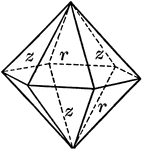Clipart tagged: ‘quartzoid’

Quartz
"Terminated usually by a combination of a positive and negative rhombohedron, which often are so equally…

"Terminated usually by a combination of a positive and negative rhombohedron, which often are so equally…